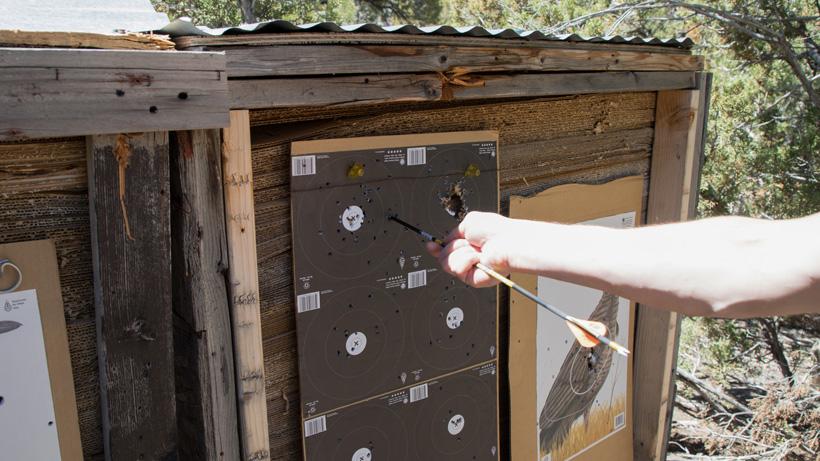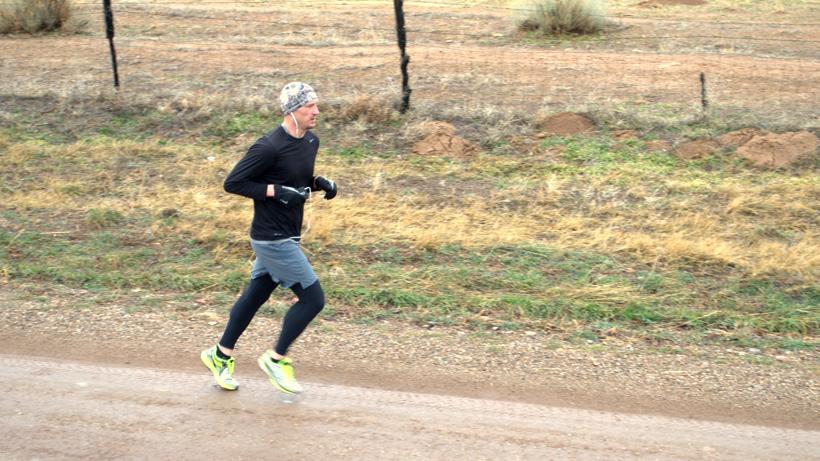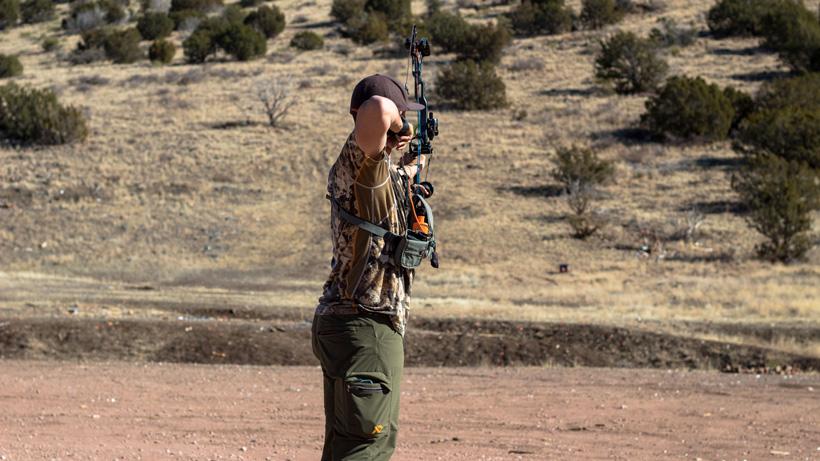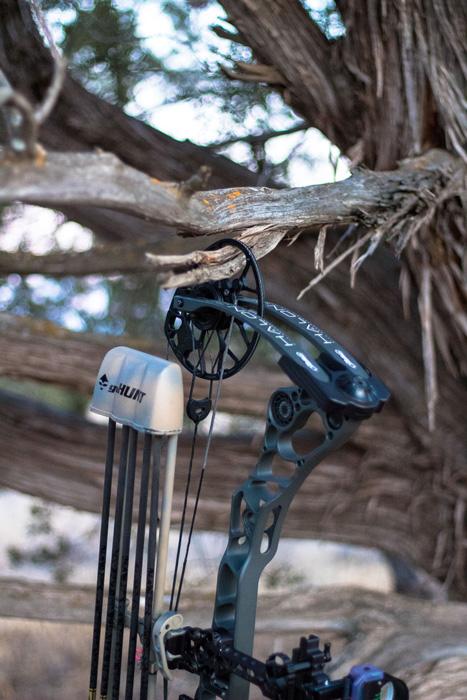






Going on a quick run and then shooting your bow to practice at an elevated heart rate. Photo credit: Trail Kreitzer

Photo credit: Dave Barnett

Photo credit: Dave Barnett

The offseason is for practice and there is always practice to be done when it comes to archery. Whether you hunt from a treestand in the whitetail woods or out on the open antelope plains, keeping sharp and constantly improving is essential for consistent success. However, too many hunters practice at set ranges from the same position in street clothes and then wonder why they struggle when they get into the woods. The reality is that you seldom get a shot in the woods that perfectly mirrors the local indoor range or your backyard. Also, you will not be in the same mental or physical state when hunting as you are at the range. For these reasons, it is essential to change up how you practice to more closely mirror how you actually hunt. Here are a few ways to practice that will have you better prepared for the upcoming season:
You usually only get one shot in a real hunting scenario so why practice by only shooting groups? If your bow sight is dialed in, then shoot one arrow at one spot on your target. If you have a target with five circles, challenge yourself to put one arrow inside each circle. Also, your shot on a bull or buck is a “cold shot,” meaning you did not get a chance to warm-up and get into a rhythm before taking it. Take a single shot at a target at a given distance at the very beginning of your practice time to get a feel for how accurate you are with a cold shot. This can often be very telling.
You do not have all day to take a shot when you have an elk standing broadside. In fact, you may have a very small window of time to execute a good shot. Using a timer, practice executing the entire draw and firing process within a set window of time without accuracy diminishing. Over time, work to progress through the process quicker while still maintaining proper form and release. The key is to hold yourself to the same standard of accuracy while working to become more efficient with your time. If you notice your form breaking down and your accuracy suffering, then give yourself more time and start working toward building back up to the smaller time window. This will prepare you to be more accurate in scenarios when you would have otherwise rushed a poor shot.
One thing that causes us to rush shots is adrenaline. The rush of having a buck or bull within bow range can cause even the best archers to have a lapse in form. While the effects of adrenaline on your fine motor skills and mental clarity cannot be removed, you can train your body to work through the physiological response better by training with an elevated heart rate. To do this, do a 30 second to one-minute fitness regimen right before shooting. An example would be 10 burpees, 20 jumping jacks and 20 push-ups. This is not enough to physically exhaust your muscles, but it will certainly force you to be more focused on the execution of your shot.
Going on a quick run and then shooting your bow to practice at an elevated heart rate. Photo credit: Trail Kreitzer
The next step from practicing with an elevated heart rate is practice immediately after (or during) extended physical exercise. This one will be tougher to pull off if you shoot at a local indoor range, but it can still be done. You should already be exercising regularly (for both your health and your backcountry fitness level) so it is really as simple as planning to go to the range immediately after your workout. Your muscles will be fatigued and you will be able to simulate the feeling of drawing and executing a shot after a day of hiking through the hills. Utilize the timer and do the exercises listed above to get your heart rate up just before the shot to further the simulation. As with all of these different methods of practice, the goal is to execute a good shot and see no reduction in accuracy.
I have never taken a shot at a deer or elk from a perfectly flat, standing position at exactly 20 yards. Instead, I have taken many shots from kneeling or standing on an incline/decline or uneven surface. I have had to shoot through small gaps in trees and move my torso laterally to get my bow out from behind a bush. All of this shows that you need to practice the same way. Spend time taking shots while kneeling or sitting. Go out to the woods or the desert with a target and practice shooting in the brush through tight windows. Get as much exposure to shooting from every position and scenario that is unlike a range as possible. This will ensure that you are ready to make a good shot on that bull or buck.
Photo credit: Dave Barnett
I have seen it happen way too often where someone practices in shorts and a t-shirt all summer and then is uncomfortable drawing his bow at the moment of truth because of his bino harness, pack and multiple layers of clothing. Drawing and shooting in the woods should be second nature by the time you have to make that shot on an animal. This means that your practice should mirror a real hunting scenario in every way possible. As such, if you could see yourself wearing it while hunting, you need to wear it while practicing. Maybe not all the time (I cannot wear multiple layers when practicing outside during Phoenix summers), but as often as possible you should be adding your gear into your archery practice. Wear your bino harness, your pack, your gear belt and gloves (if you will be wearing gloves while hunting). Become accustomed to shooting with a jacket on if you will be hunting in places where it might get cold during your hunt. Shoot with your rain gear on and with or without a hat. All of these things can affect your accuracy if you do not practice with them so use the time in the offseason to get used to wearing them.
Photo credit: Dave Barnett
After you have spent some time practicing with these different methods, put them all together to really challenge yourself and simulate a hunting scenario. Here is how you can do it:
Growing as a bowhunter takes many different forms and one of the most important is working on your skill as an archer. To improve, you must challenge yourself by “practicing how you play.” Spend time this offseason making your practice time as close to the real thing as possible to ensure that you are ready when that real opportunity arises. For more information on practice sessions, you can check out this great article: The archery practice plan for the offseason
Put on all of the gear you might be wearing while hunting.
Set a target at a specific distance that you might reasonably expect to shoot during a hunt.
Perform exercises to incite muscle fatigue and get your heart rate up.
Have someone start a timer for a predetermined amount of time when you have completed your exercises.
Come up to the place from which you will shoot, kneel down and execute a single shot before time expires.
Challenge yourself or a partner to be more accurate and quicker than the previous attempts.